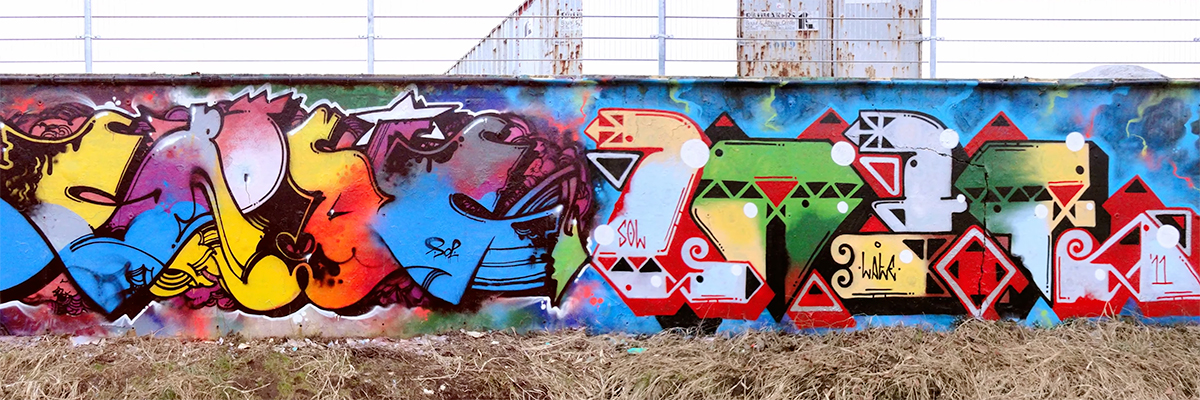“You didn’t have a lot of input – and the input you did have had a lot of impact!,” says abstract painter Jeroen Erosie (b.1976, Netherlands) about his beginnings as a graffiti writer in the early 1990s. The revelation of seeing new works in print or on street walls was not something to be taken for granted, as with thumbing through an Instagram feed.
Tracing the evolution of an artist from graffiti writing to personal life and professional art practice – this is what some broadly refer to as Post-Graffiti. With graffiti at its genesis, it is also fascinating to witness how practices and techniques progress in later times at the hand of older practitioners.

Today we have a new documentary that is part of a larger series planned to study just this from a historical, anthropological, and art-historical perspective. Kristina Borhes, one-half of MZM PROJECTS with Nazar Tymoshchuk has been studying and researching in light of our ongoing exploration of post-graffiti – including her white paper Another Attempt to Explore the Transient Nature of Post Graffiti Through the History of a Term.
“We want to discover the stories from artists’ graffiti past and to understand what role it played in the process of forming their artistic practices,” Borhes tells us. ‘Every episode is dedicated to different artists from a particular scene.”
The Ukraine-born/France-based duo of independent researchers and documentarists have had to delay production of this long-planned project due to the ongoing war in their home country, but are proud to have reached this benchmark. This is the first of two completed interviews, but there will be many more if they can follow their planned program.
Ms. Borhes tells us that one of their influences is the work of documentary filmmaker Michael Blackwood, who collected valuable video interviews “with Rothko, Guston, the New York School, and many other artists.” The filmmakers are in awe of the opportunity to study the artist up close without unnecessary packaging, filtering, or attempts to otherwise manipulate the viewer. Borhes says one of the aspects she admired of Blackwood’s earlier documentaries allowed the viewer, “This possibility to see how they talked, to follow their emotions, gestures.”
BSA is proud to premiere this work and series days after its release. Shot and produced in collaboration with last year’s Bien Urbain Festival, this one will be followed by a second interview with street artist/fine artist and master experimenter Eltono.
Other Articles You May Like from BSA:
Today's special guest: Denis Leo Hegic, Curator, cultural manager, architect, Co-Founder of Monumenta in Leipzig, Wandelism in Berlin. Big talker, bigger doer. You wake up one morning and snow has fa...
Street art in the last five years has been lit on fire with politically themed illustrations, installations, slogans, opinions, and insights that implore passersby to take action and to be engaged in...
The Church of Santa Maria Novella, The Opera del Duomo Museum, the Uffizi Gallery. Florence is forever tied to Renaissance art history and shares its cultural riches with the world daily, including a...
Welcome to BSA Images of the Week. Normally on Sunday we give you a hit parade of different pieces on the street so you can stay connected with the movement on the street. This Sunday we are loo...
With our thanks to you, our BSA family. With our sincere best wishes. Merry Christmas. Peace on Earth.
 BROOKLYN STREET ART LOVES YOU MORE EVERY DAY
BROOKLYN STREET ART LOVES YOU MORE EVERY DAY










